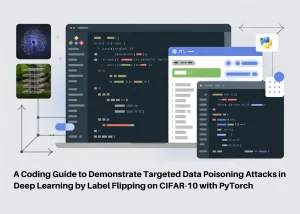How IT leaders can spearhead the charge to transform education

Presented by MSI
If a primary goal of education is to prepare kids for the future, IT leaders play a more pivotal role than ever. Technology has profoundly impacted work in every industry — and it’s opened up vast new possibilities in new fields, from positions across STEM industries and AI, to esports and beyond. It’s also transformed how students engage with learning, skill development and high-level problem-solving and critical thinking.
“Exposing students to computer science and high-end technology is not only useful for the future as they inevitably use it in their careers, but it changes their relationship to school,” says Mat Holley, esports program manager at MSI. “When they’re more engaged, they have better attendance. They have better grades. They’re more prepared for college and the job market. The enthusiasm is remarkable.”
School boards are leading the charge for these initiatives, but they can’t do it on their own. They must partner with IT leaders in their district, education specialists and technology industry professionals to deliver these learning experiences, and the challenge is to ensure that these programs are cost-effective, with technology, expertise and activities that are future-proof.
How technology is transforming the learning experience
To support these initiatives, the choice of hardware and software becomes critical. Holley points to the extracurricular club in the charter school district in Chula Vista, San Diego he worked with to help develop and outfit new technology learning initiatives. Students there work on video design, broadcasting, AI and music creation using Vector GP and Raider GE series laptops from MSI, integrating graphics hardware from Nvidia and processing power from Intel. And this high-end gaming hardware and software supports what’s become the largest high school-run esports program in the U.S., the Kern High School District Esports League.
“I’ve worked with schools that are far along their journey and ready to level up their hardware, to keep pace with how the kids are working and learning, and I’ve also helped districts build the programs from the ground up, from the right hardware to student outreach,” Holley explains. “And though much of this is uncharted territory, the momentum is building, sometimes through word of mouth.”
The surprising benefits of esports
Educators are sharing knowledge, sparking interest and collaborating with their peers, working toward developing a curriculum standard and blueprint for the hardware and software specifications that can support those programs.
Though it’s initially surprised many educators and leaders that esports can have such a profound effect on kids — especially the ones who often feel excluded from other sports — the number of esports programs is growing. Not only are there tremendous educational and social development benefits for the students that participate, esports also attracts kids who have never joined an extracurricular club: the girls who have felt left out in science and math classes, the BIPOC students who deserve bigger opportunities. The clubs raise their confidence in their own abilities, and more often than not, these students go on to study computer science or some other linked technology career.
“There is no barrier to entry to be a gamer, and this goes for computer science at large,” Holley says. “You don’t even have to be a gamer to enter these clubs. More and more, esports is plugged into all the various technology clubs like design, broadcasting and journalism, and formerly disenfranchised kids are finding their calling through these clubs in an unprecedented way.”
Building the learning experience from the ground up
Of course, there continue to be challenges for school districts developing these programs, and many of them come down to major budget constraints. There are also the difficulties that come with ensuring security is solid, that new technology is integrated into existing networks, and moving the environment from on-prem to the cloud. MSI collaborates with educational institutions to ensure that they’re not only hitting the district’s hardware specs, but new hardware will be integrated seamlessly.
“As we saw more esports integrated into schools, we worked with schools to meet the specifications of their price points, their warranty needs, which are typically longer than a retail warranty,” Holley says. “We wanted to also make sure that these were machines that the students got excited to play on, that sophisticated esports titles were supported. As we started to work with more schools closely, we integrated products from our professional line to improve the student experience and give them access to even more tech areas to explore.”
Educational IT leaders rejoice: adding computer labs like these is easier than ever. As computing advances, the size of the hardware continues to shrink, making student computers lightweight and easy for IT teams to deploy. IT leaders should also look for hardware that’s easy to integrate, especially from a security point of view — however, most districts are working with legacy hardware environments.
“As you build a technology center for students, you have to consider whether existing hardware will play with the new, and whether it will move to the cloud securely,” Holley says. “But as long as we can integrate security standards like content filters, custom imaging and Autopilot deployment, it’s much easier to deploy at scale in almost any environment. We try to build directly in tandem with district-wide IT departments, so they can tell us what they need and what their road map looks like. Then from the manufacturer side, we’re able to make sure that we all play along in the years to come.”
Another major consideration is product life cycles, which are incredibly short in the consumer world. IT leaders should work with a partner that offers dedicated hardware for education, with life cycles long enough to mesh with the fairly long bidding and buying timeline for education purchases.
And of course, as cloud computing becomes the standard, it’s important to stay abreast of hardware and software changes and evolving risk scenarios. That means research, testing and working with your supplier to keep informed about the newest hardware and software advancements and when it’s time to upgrade. It also means selecting hardware that’s easily upgradable and expandable.
Making hardware choices a whole lot easier
To support technology education, MSI offers the Cubi NUC and DP21, which support Intel vPro and Windows Autopilot to simplify management, enhance security and streamline the deployment process. Thunderbolt 4 technology and power delivery offer fast connectivity and charging. They’re also easily scalable, and offer real-time data processing for AI and machine learning. Their compact size offers flexible installation and a good performance vs. footprint ratio, plus flexible configuration.
The company also offers STEM, gaming and content creation computers like the DP180, CreatorPro, Vector GP and Raider GE series laptops with dedicated graphics hardware that accelerate graphics-heavy applications, and offer easy upgradability with expandable memory and storage options to ensure longevity.
Veteran resellers and manufacturers will work with decision-makers to ensure schools get the best hardware and software their money can buy, plus keep IT teams in the loop what’s coming next, and how to make sure students have every opportunity to learn with the newest technology possible.
“We’re paving a path for these students into the future, and it’s important that we’re equipping them for everything that’s to come,” Holley says. “Gaming and other high-tech hardware has become an integral part of the plan, so IT leaders must be willing to get creative when designing technology resources and work with allies across manufacturing and reselling to push initiatives forward.”
Dig deeper: Learn more here about the technology solutions that power today’s educational experiences.
Sponsored articles are content produced by a company that is either paying for the post or has a business relationship with VentureBeat, and they’re always clearly marked. For more information, contact sales@venturebeat.com.












